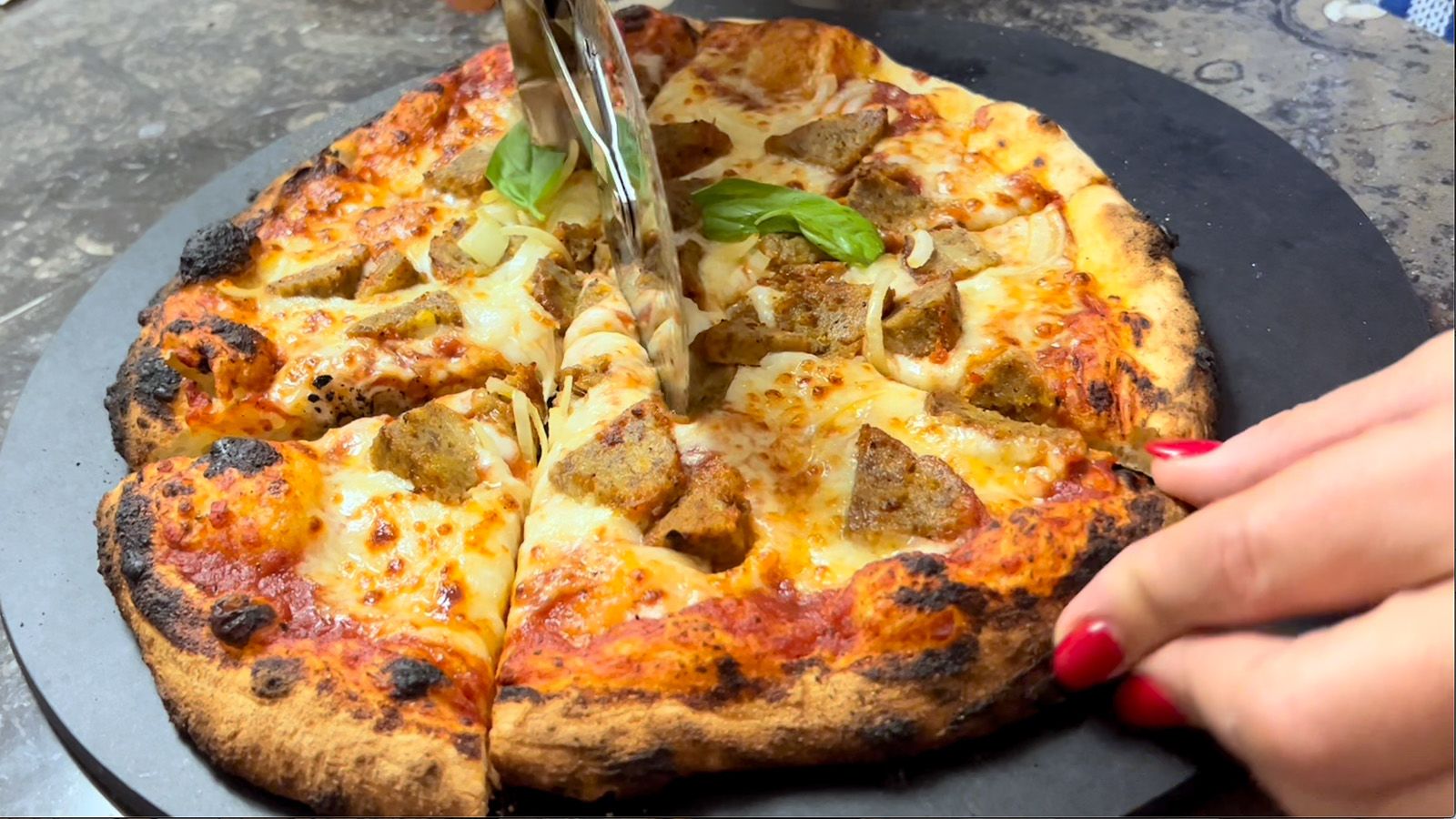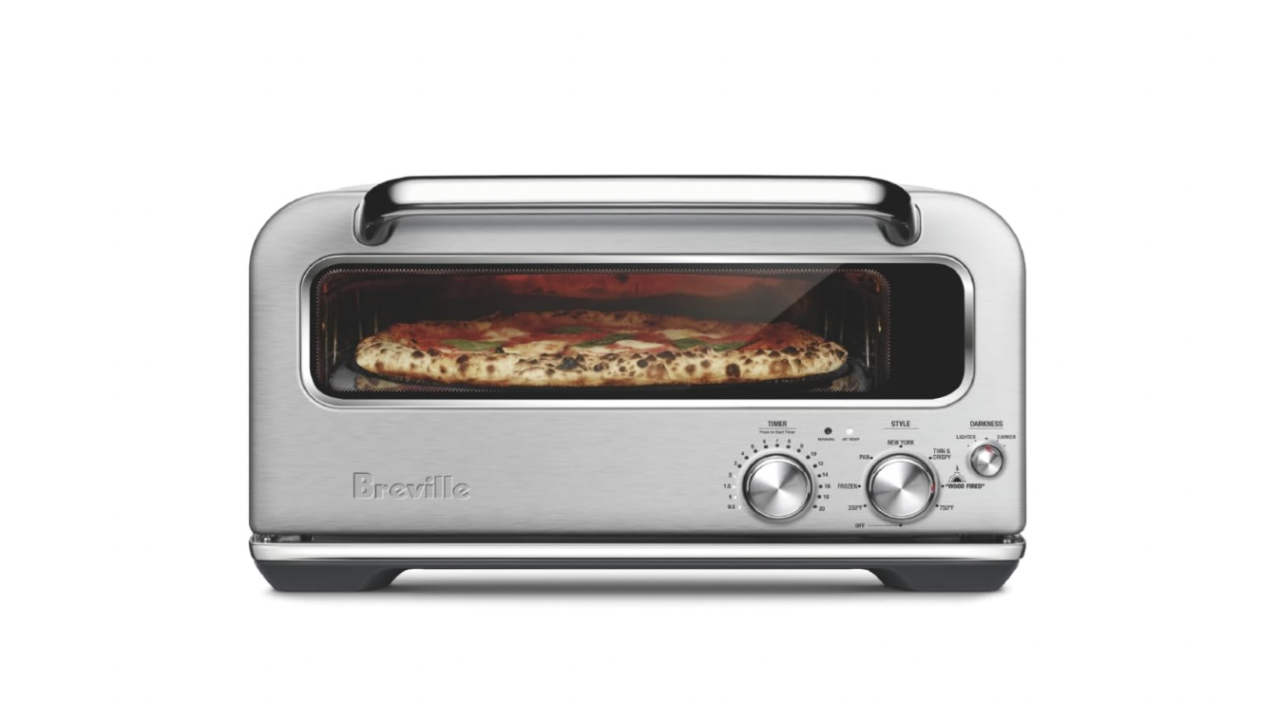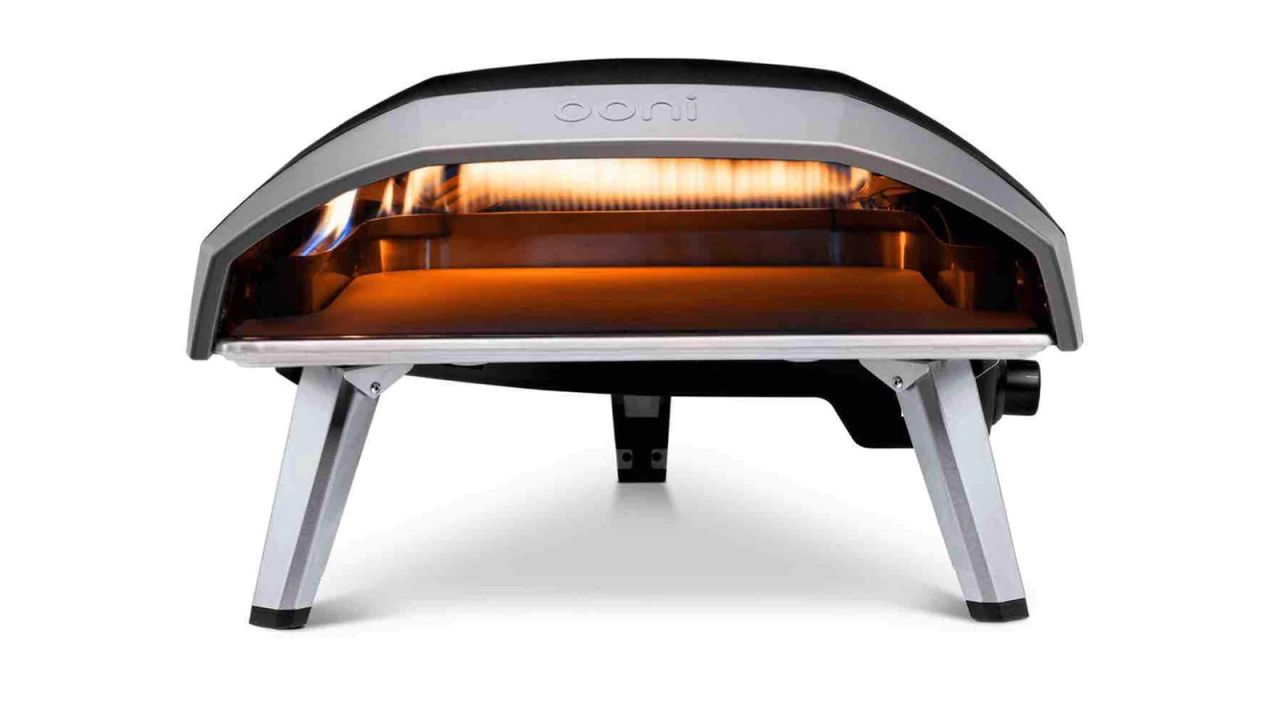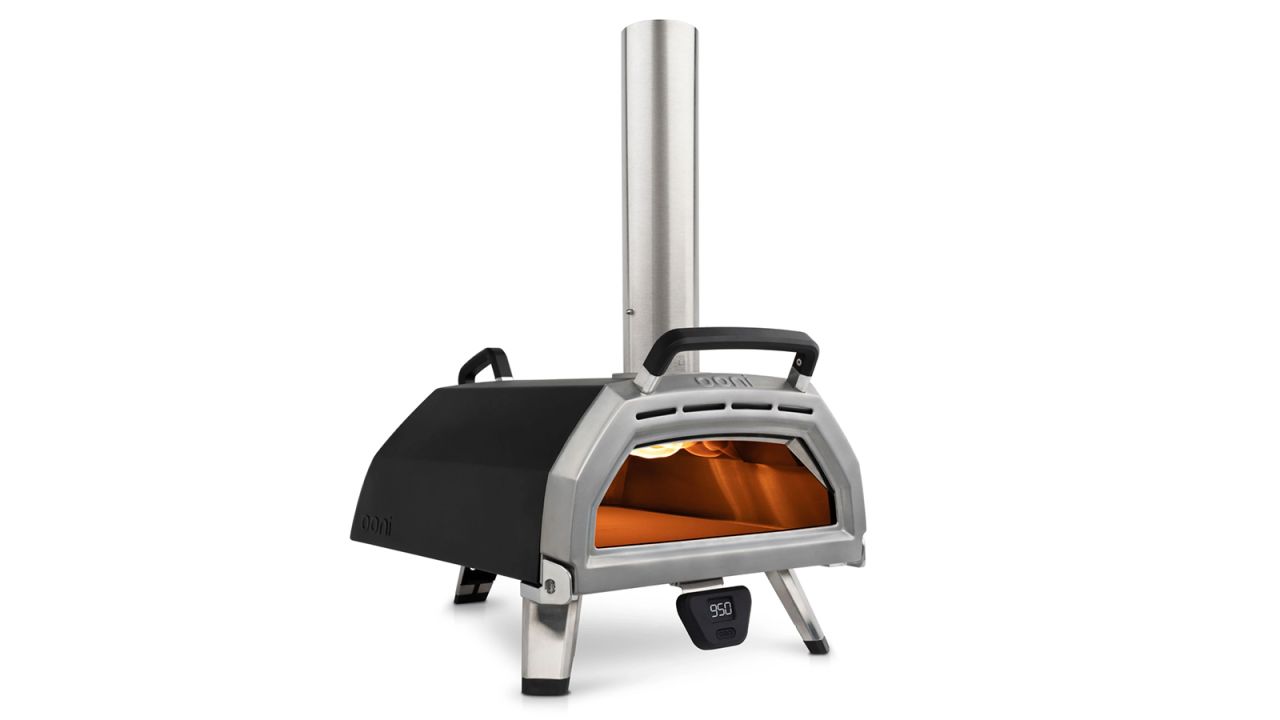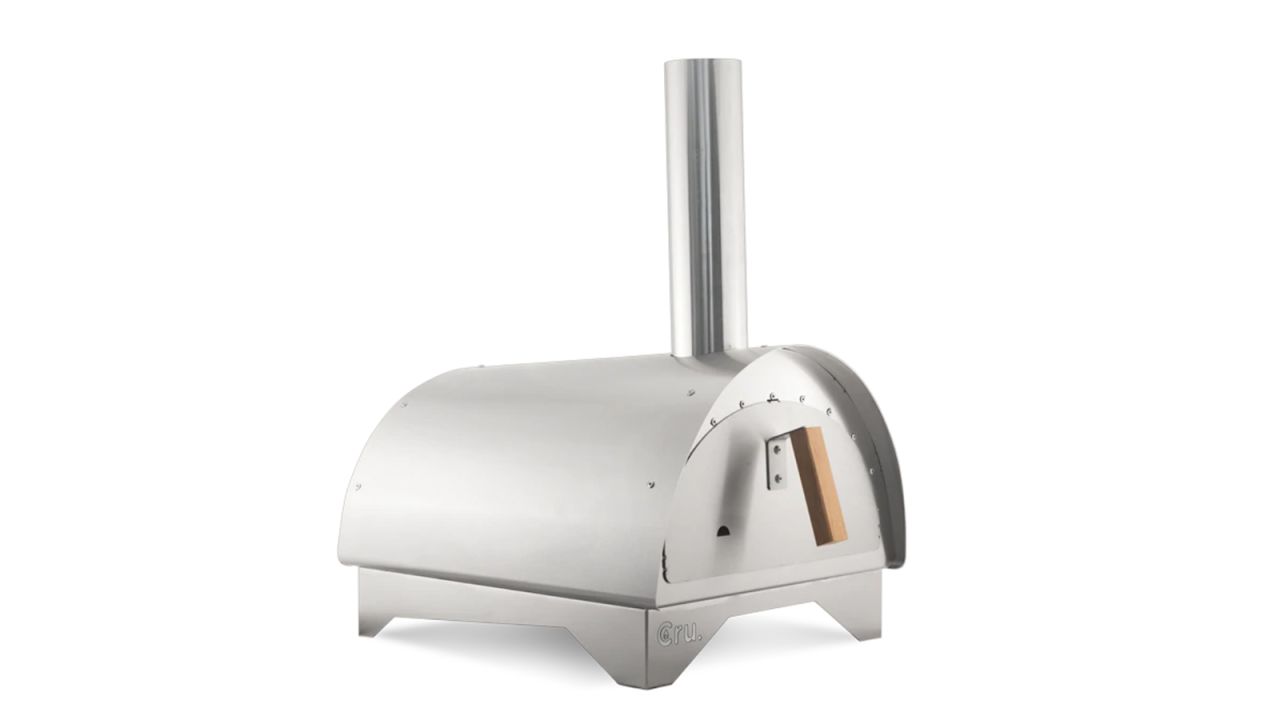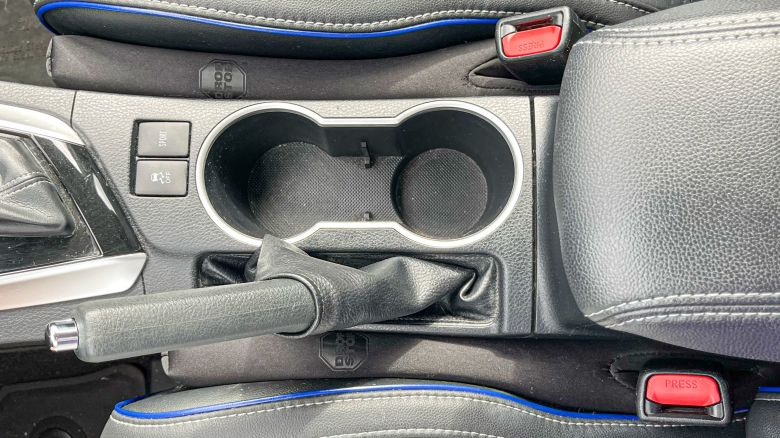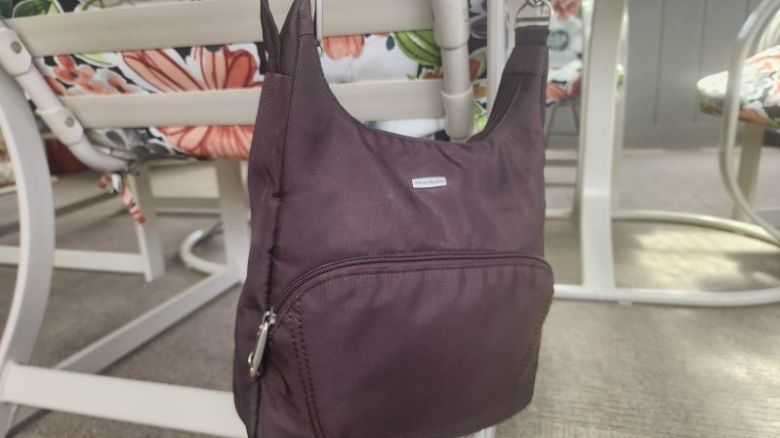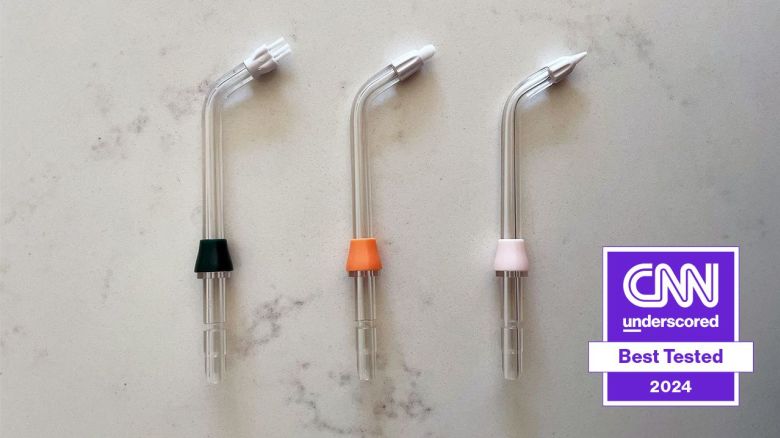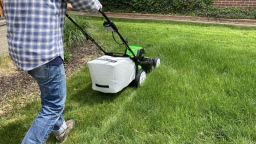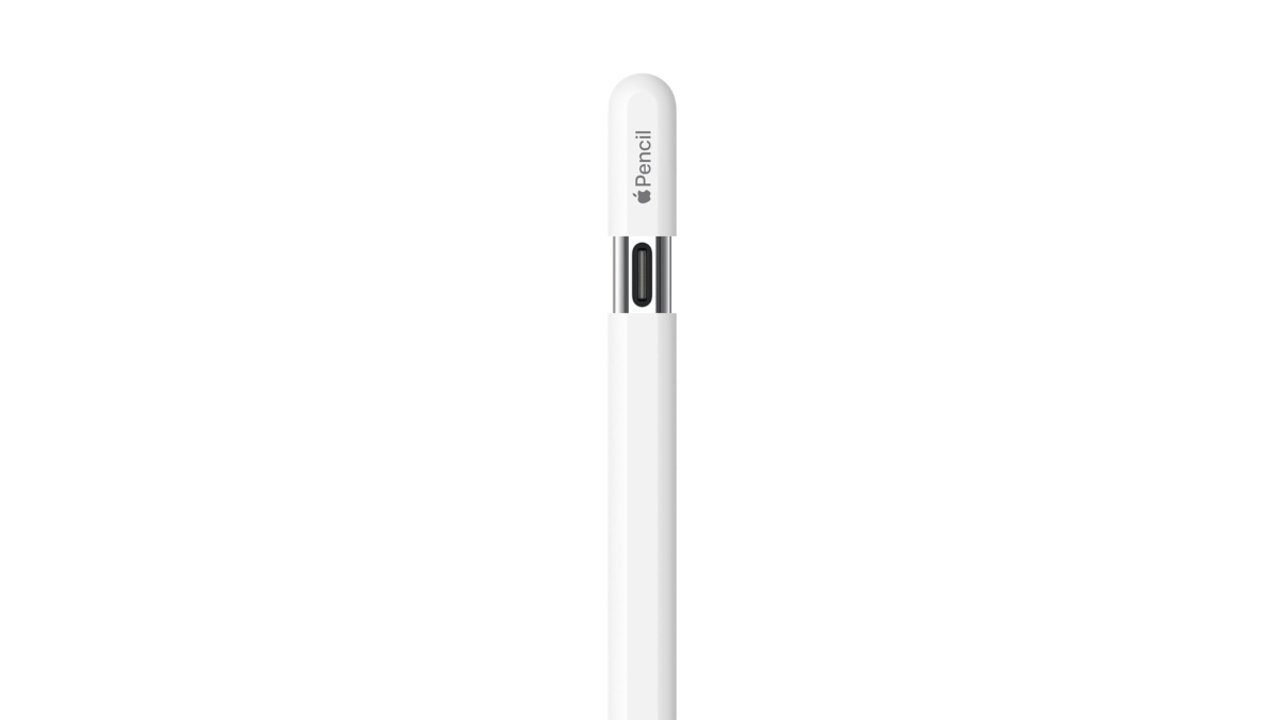Everyone loves pizza — so why not enjoy making it at home? Whether your tastes run toward artisan-baked, wood-fired Italian styles with puffy, soft crusts; thin-crust New York slices or deep-dish Chicago pies, the latest home pizza ovens let aspiring pizzaioli turn out pizzas that match — or even exceed — the quality of those you’d get from most local pizza joints.
To pick out the perfect pizza oven, we tested nine different leading pizza ovens in electric, gas, wood/charcoal-burning and multi-fuel configurations, spending 10 weeks making countless pizzas to find the best models for any dedicated home pizza baker.
The only electric pizza oven we tested, the Breville Pizzaiolo was our favorite oven overall because of its predictable, consistent results and even cooking.
The Ooni Karu 16 was the simplest-to-use multi-fuel oven we tested, with straightforward switching between wood and gas and easy fuel loading — plus, it made great artisanal pizzas with either fuel source.
Best pizza oven overall, best electric pizza oven: Breville Smart Oven Pizzaiolo Pizza Oven
$1,000 at Amazon, Williams Sonoma and Breville
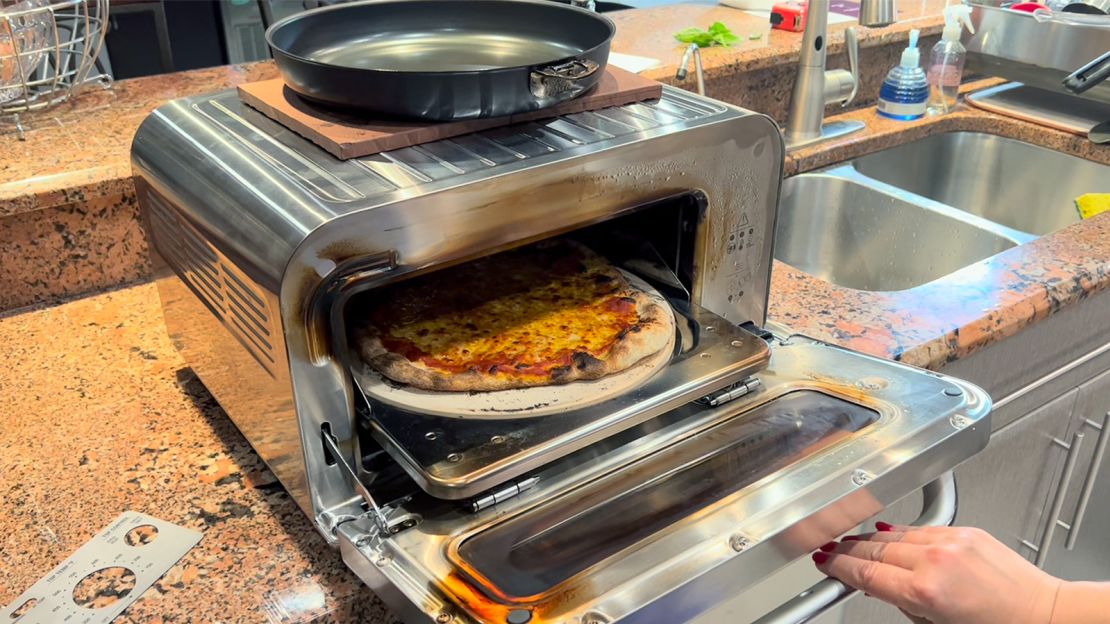
Key Specs
- Capacity: 12-inch pizzas
- Maximum temperature: 750º F
- Accessories: Pizza peel, deep-dish pizza pan
- Warranty: Two years (three- and four-year extended warranties available at an additional cost when purchasing directly from Breville)
The only electric pizza oven we looked at happens to be our favorite pizza oven overall. We utterly loved using the Pizzaiolo and consistently got the best results from it compared to every other oven we evaluated. It doesn’t get as hot as the competition (it can hit 750 degrees Fahrenheit while wood- and gas-fired ovens can get up to 900 degrees Fahrenheit) but, because it can control the temperature more precisely, it turns out evenly cooked crusts and overall better pizzas than any other oven we tested.
The Pizzaiolo doesn’t look much like the other pizza ovens we tested. Rather, the heavy stainless steel unit resembles an oversized toaster oven adorned with three push-button dials in front — one for selecting among pre-programmed baking temperatures, one for the baking timer and one for darkness adjustment.
But this is all you need to make perfect pizzas every time: no turning, no positioning, no vent adjusting. No futzing with anything. Simply pick your style with one of the preset modes, wait for it to come up to temperature (indicated with an LED “AT TEMP” light), place your pizza on a circular stone (which can accommodate pies of 11 inches or less) and wait for it to cook. It takes 3 minutes for a “Wood Fired,” 8 minutes for a “New York,” and 18 minutes for a “Pan Pizza.” And unlike the gas, wood- and charcoal-burning ovens we tested, you can cook at any time of day, in any weather, indoors, in less time than it takes to cook a pizza with gas or with wood if we take setup, fuel loading and preheating into consideration.
We preferred the Pizzaiolo to everything else we evaluated because of its predictable, consistent results and even cooking, which comes from the placement and electronic control of the dual heating elements — one pair of concentric circular elements set below the stone and one above. The presets let you tailor the cooking chamber’s temperature precisely by independently controlling the heating elements and the operation of the oven’s convection fan, with constant fine-tuning courtesy of internal sensors. It’s an impressive piece of industrial design and technology. You can override the preprogrammed temperatures and set the heating elements manually, but we never explored this and we don’t expect most users will either.
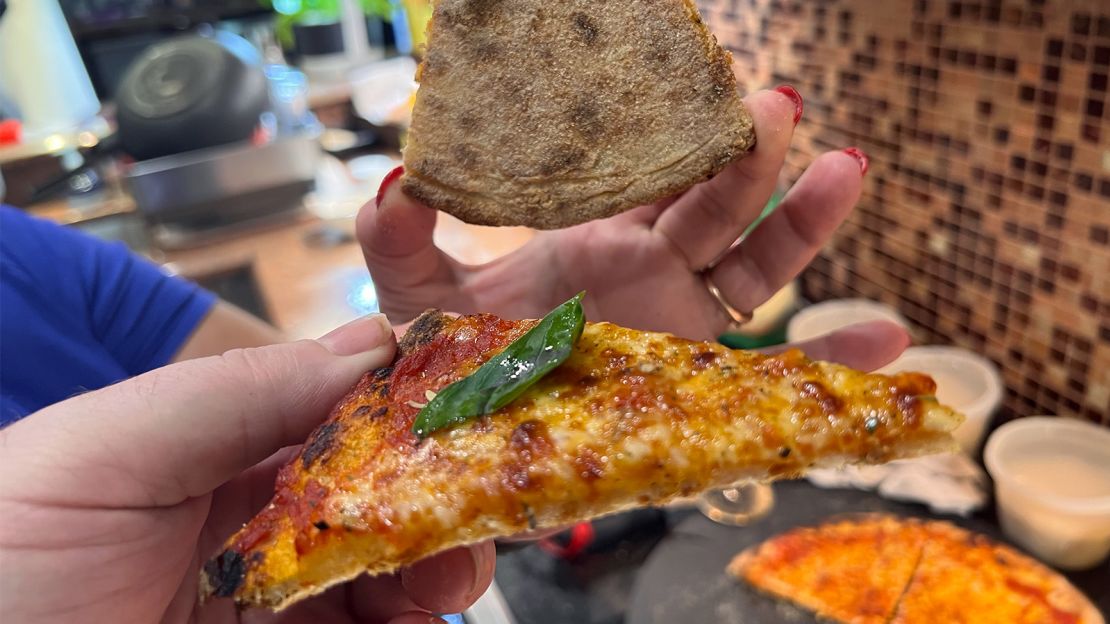
It’s worth noting that, because of the lower and more consistent cooking temperatures compared to gas or wood ovens, you will not get the pronounced burn marks that give your pies that “artisan” look and crust texture, with leopard-skin crust char and big crust bubbles. Instead, you’ll get results similar to an American pizza parlor and slice shop with a steel deck electric setup: very evenly cooked crusts on top and bottom. But is there anything wrong with that? We think not.
We also found that the temperature indicator is solely visual and lacks an audible cue, so as you’re prepping in the kitchen, you’ll want to check for the LED after the suggested 18–20-minute preheat period. Nor is there an integrated thermometer to indicate the current temperature. Also, while the oven alerts you with a tone when the pizza is done, it’s not very loud and the oven continues cooking at temperature after the timer ends. Presumably, this is designed so you can reset the timer and load more pizzas, as with the gas and wood ovens, but to be safe, it’s a good idea to use an external timer.
However, these are pretty minor issues. Given the quality of pizzas we’ve gotten out of this unit, it’s a clear winner, even considering it’s the most expensive oven we tested. As with all of Breville’s products, the build quality is solid, and Breville’s two-year warranty support is good (longer warranties are available when you purchase directly from Breville).
Best gas pizza oven: Ooni Koda 16 Gas-Powered Pizza Oven
$599 at Ooni; $600 Williams Sonoma
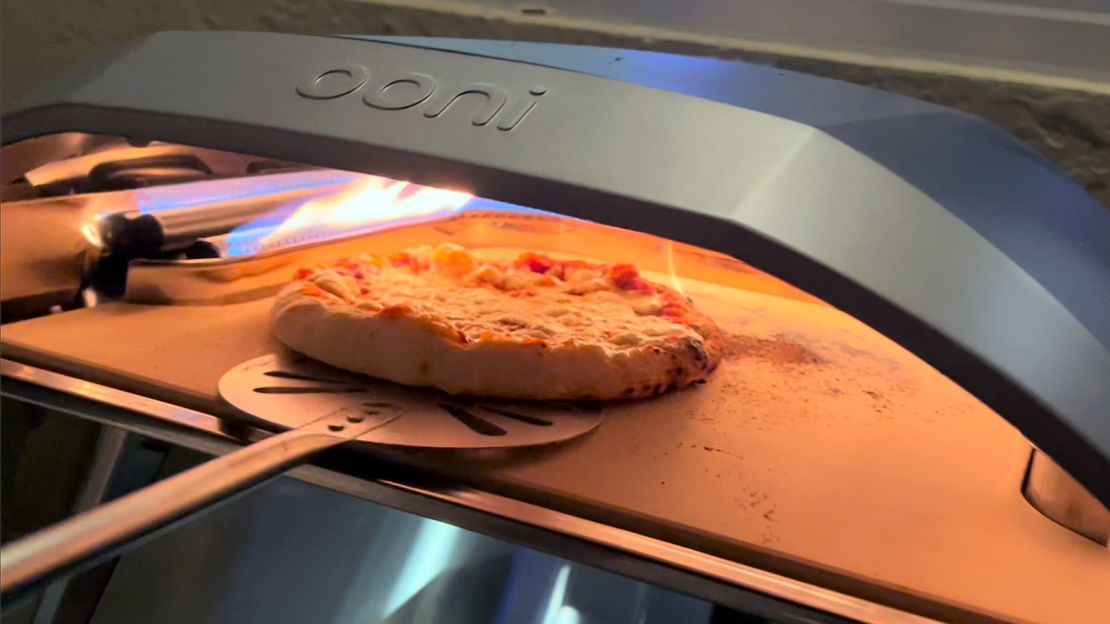
Key Specs
- Capacity: 16-inch pizzas
- Maximum temperature: 950º F
- Accessories: Propane regulator and hose (natural gas regulator and peel available separately)
- Warranty: 3 years, with registration
- Smaller version: Ooni Koda 12, $399 at Ooni
If you’re looking to master the artistry of traditional pizza-making with a minimum of fuss, then we think the gas-fueled Ooni Koda — which we tested in the larger 16-inch version (it’s available in a more compact 12-inch configuration for $399 as well) — will satisfy most aspiring backyard pizzaioli. Gas lets it hit the 900-degree temperature required for Neapolitan-style pizzas without the fuss of stoking a wood fire.
The Koda can run from a 20-pound liquid propane (LP) tank or from a natural gas hookup (a $49 conversion kit is required). We found the setup to be relatively easy. We unpacked it from the box, unfolded its tripod legs, placed it on a stable fire-resistant surface (we used the Ooni modular table), installed the pizza stone and plugged in the tank.
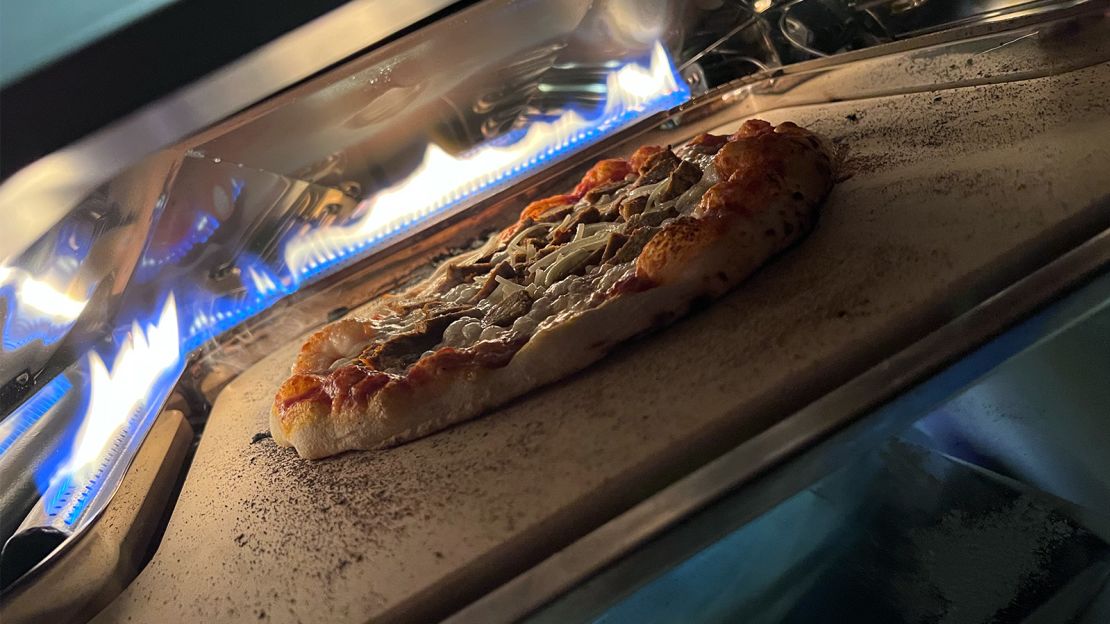
Getting the Ooni Koda 16 fired up is as simple as turning the knob on the side, pushing it in and clicking it to ignition at full power. After about 15 minutes, the unusual L-shaped burner gets the oven up to 932 degrees Fahrenheit and the cordierite baking stone holds and distributes heat extremely well; the Ooni Koda 16 gave us a more even distribution of heat than the more expensive Karu and Gozney Roccbox. The Koda’s insulation — mineral wool sandwiched between the stainless steel inner shell and the powder-coated carbon steel shell outer housing — also did a better job than most competitors, though we don’t recommend you touch the outside of the oven while it is hot.
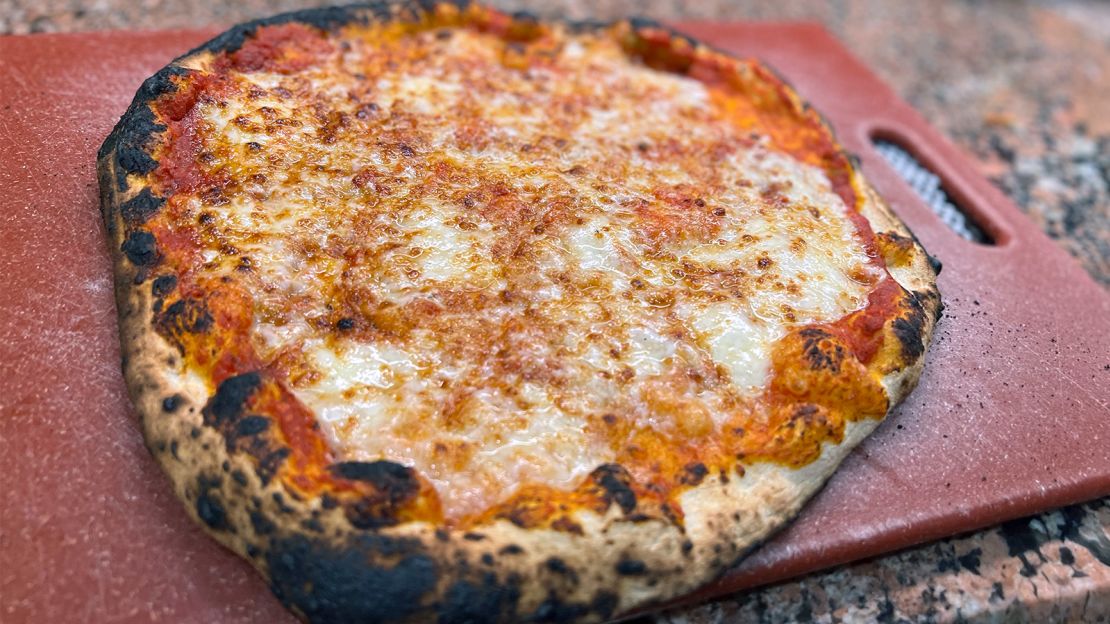
As with all gas-fired ovens, it takes a bit of practice to get good results. The Koda gets very hot, and at maximum oven temperature, a pizza cooks in under 90 seconds, and will let you achieve that “leopard skin” and big blisters that pizza aficionados like to chase. But you’ll need to learn how to launch and position the pie using a peel, and then pay careful attention (you absolutely can’t walk away for even a moment), turning the pizza a quarter turn every 15 seconds so it cooks evenly.
You may want to lower the gas output immediately before cooking a pizza and then monitor the temperature with an infrared thermometer. Some pizza crusts do not need to cook at 900-degree temperatures; you may get better results in the 600-degree to 700-degree range, using longer cook times to get even cooking and the desired results. That said, should you burn parts off or leave ingredients on the stone, no worries — simply run the flame at high heat, incinerate it and scrape it off with a wire brush.
Overall, we felt the build quality was pretty decent, and it is certainly made of top materials that should last a long time; however, we recommend you buy a cover for it should you keep it outdoors. And if you can keep it indoors between uses, that’s even better. There are a couple of downsides — there’s no integrated thermometer and no oven door — but it’s a great gas-only setup that turns out very enjoyable pizzas.
Best multi-fuel pizza oven: Ooni Karu 16 Multi-Fuel Pizza Oven
$799 at Ooni; $800 at Williams Sonoma
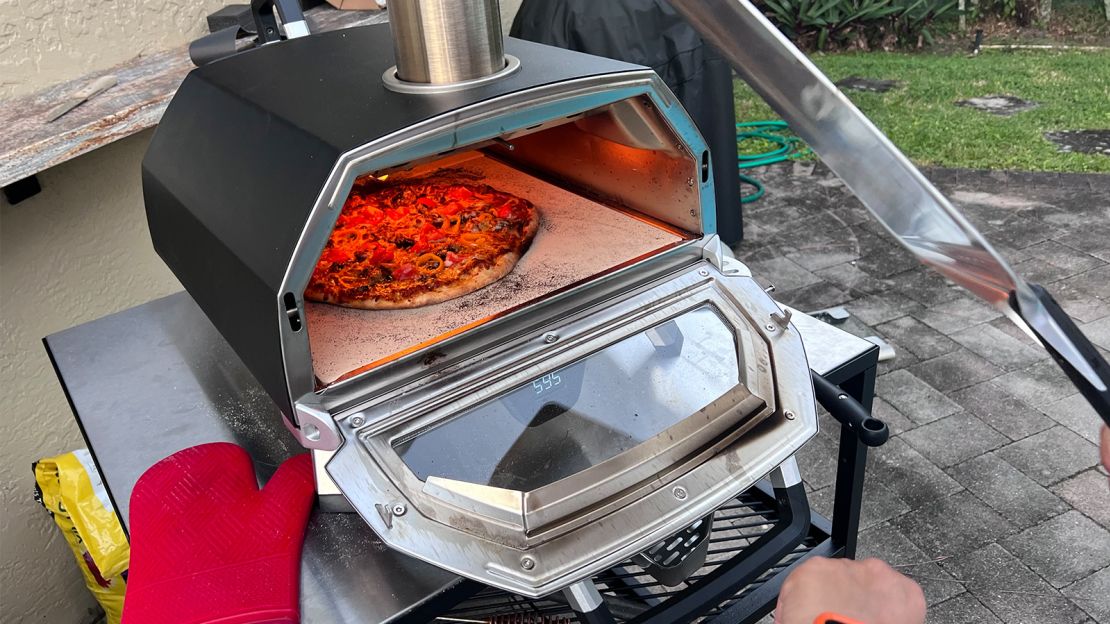
Key Specs
While we feel that the gas-fueled Koda is the Ooni for the majority of home pizza makers, some aficionados will want the ability to cook with either wood or gas. Proponents of wood ovens appreciate the added flavor, or simply enjoy the artistry, replicating more closely the pizza-baking methods used in Naples.
The Ooni Karu 16 multi-fuel pizza oven will give you these options. You can use the included wood fuel tray or install a gas burner accessory (the propane kit is $119.99; natural gas $149.99). The Koda 16 also adds a hinged metal front door with a large insulated handle, a glass window and a bracket-mounted external digital thermometer with a thermocouple.
We evaluated the Karu 16 in both liquid propane gas and wood configurations. Unlike the Koda, which has an L-shaped burner, the Karu has two large gas jets that take the place of the wood fuel tray at the rear of the oven. Installation took us about 10 minutes, with a hinged door, a backplate and the thermometer being the three main components requiring the use of the included Torx wrench.
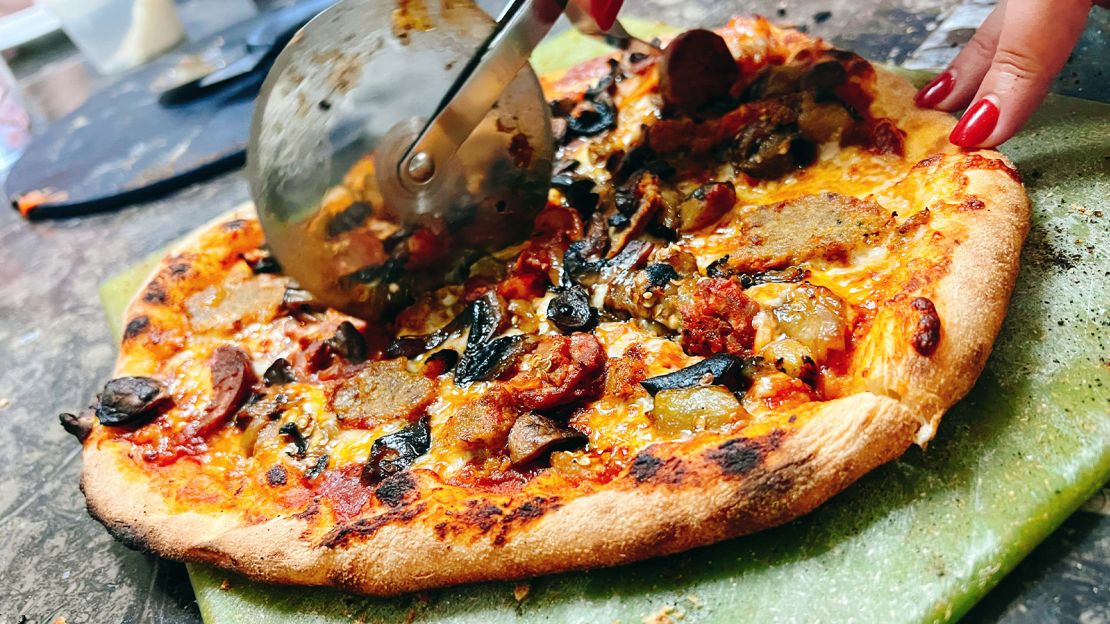
In gas mode, we got roughly similar results to the Koda 16, though pizzas tended to cook more evenly with less effort in the gas-specific Koda. However, we had no problems getting those leopard spots and crust bubbles with Karu’s dual rear gas jets, we just needed to pay careful attention to rotating our pizzas.
Turning to wood fuel, we couldn’t tell the difference from a flavor standpoint, likely because at such high temperatures we got only a brief exposure to the hardwood we were using. However, we found it was much easier to overcook the pies, and more careful heat management was necessary. This is accomplished using the Karu’s stainless steel vented smokestack and in-oven vent control (when the oven is in operation you’ll want to use something other than your hands to adjust it, such as barbecue tongs, as it is far too hot).
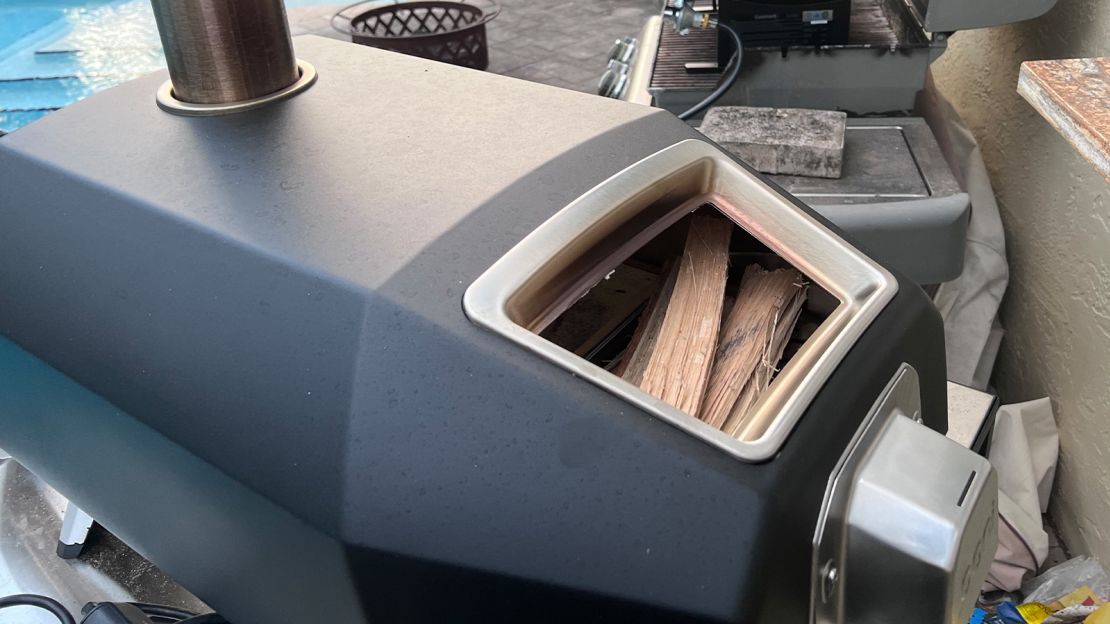
We did get some great pizzas from the oven in wood mode, and the Karu’s design made the process relatively easy. In particular, the rear cover makes it easy to add additional wood and charcoal and prevents wind from extinguishing the fire.
At almost 63 pounds, the Karu 16 is too heavy to be considered “portable” when compared with the 40-pound Koda 16, so you will want to put it on a sturdy surface, such as a metal table with caster wheels so you can move it in and out of the elements. If you intend to keep it outside, then you’ll want the cover as well. If you don’t want such a big oven but still want to keep your fuel options open, then the smaller Karu 12 is available for $399.
Best wood-burning pizza oven: Cru Ovens Model 30 Pizza Oven
$550 $495 BBQ Guys; $525 $495 at Cru Ovens
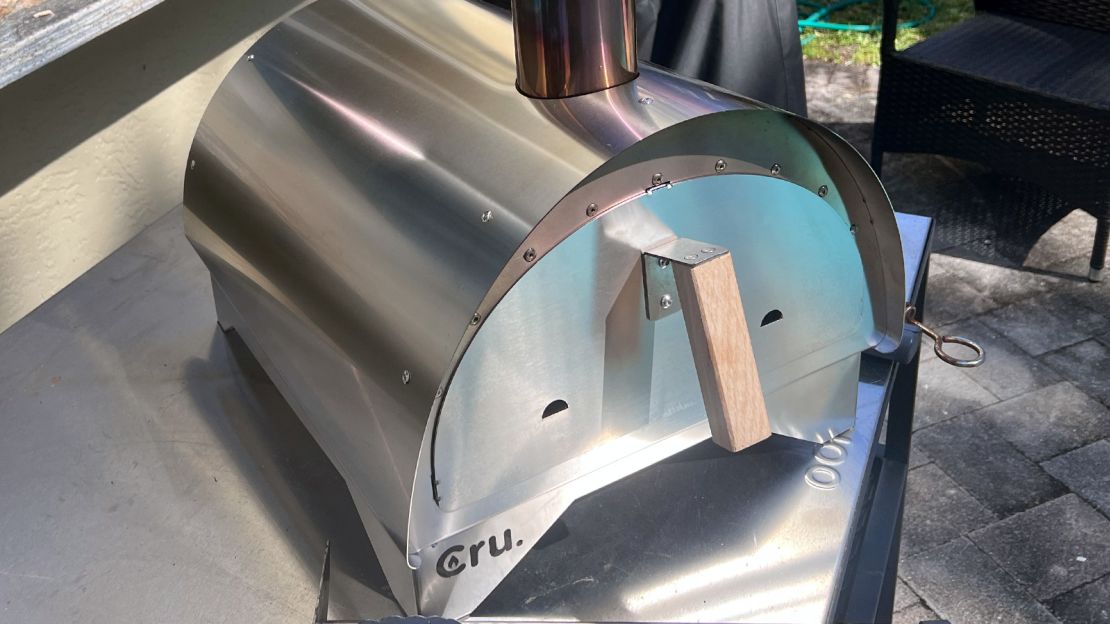
Key Specs
- Capacity: 12-inch pizzas
- Maximum temperature: 900º F
- Accessories: Pizza peel, embers rake
- Warranty: 1 year
Although we are, admittedly, fans of electric and gas pizza cooking for convenience and ease of heat management, we think the Cru Oven Model 30, an all-stainless steel pizza oven made in Portugal, is the best choice for those who prefer to focus on wood-fired pizza baking.
The Cru Oven Model 30 is about as barebones as it gets when compared to the others on this list — it’s not insulated and there’s no separate removable tray for removing and loading wood or thermometer. With its large ceiling arc and unfinished, laser-cut steel panels, it has a distinct, almost steampunk personality — think Mad Max Beyond Napoli. It’s basically a wood-burning stove or outdoor fireplace that makes pizza.
But the interior heat reflectivity is excellent, the oven’s generous interior with a high ceiling makes it very easy to maneuver your pizzas and the ceramic stone is easily removable and can be replaced (or you can substitute third-party options if desired).

Fueling the oven is simple. You load the wood at the center of the stone, make a teepee, and light it on fire – we used square firestarters and a BIC butane lighter wand. When everything is burning nicely, you push it all back to the rear of the oven using the included ember rake. As the fuel burns down to embers and pizzas are removed, you load more fuel, approximately every 15 minutes. Vent management? There isn’t any. There’s a stainless steel smokestack, which has no controls. You put in fuel; it burns; you cook. When it cools off, you brush out the ashes. The Cru Oven Model 30 does come with a front door cover, but you’re not meant to cook with it – it’s for extinguishing the flames and for shielding the interior from the elements when not in use.
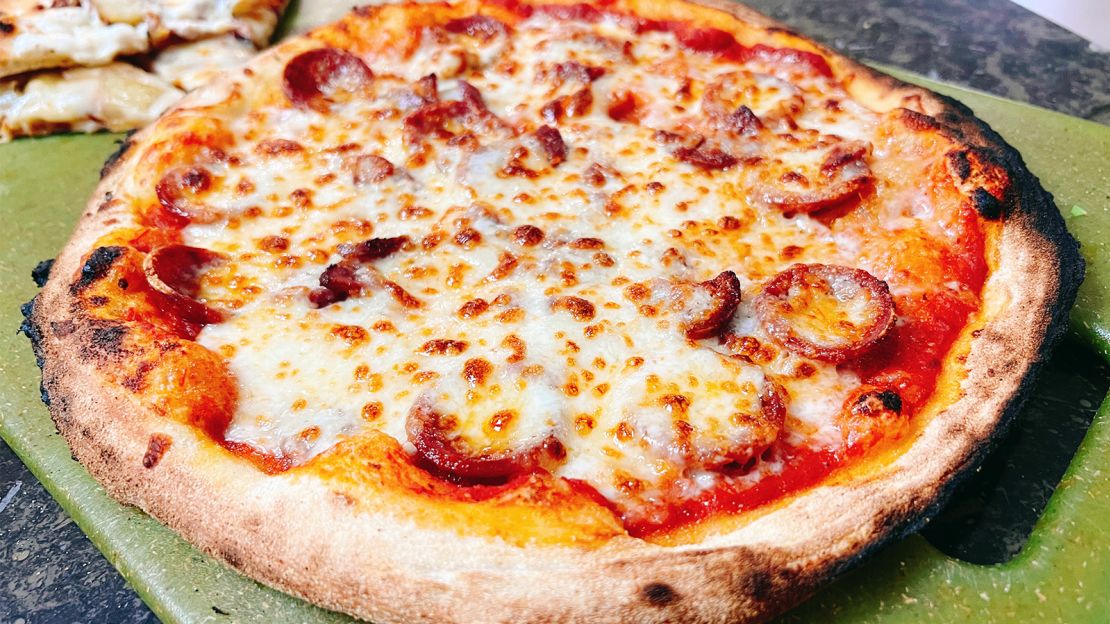
We loved the pizzas that came out of this oven — you can produce artisan-style pies with the Cru Oven Model 30 and achieve the big bubbles and high char levels that wood-fired enthusiasts want. But as this is the most primitive of designs, developing fuel management skills on this oven is paramount, so it isn’t for everyone. Because there is no way to adjust airflow (there are no vents!), you need to develop a sense of how long to wait for the fuel to burn down to the desired temperature range that will hold for as many minutes as you need to cook the pie.
By the way, under no circumstances should you touch this because it has no insulation, and you’ll easily burn yourself, as my wife learned when she accidentally touched the edge of it briefly. Keep kids away when using this — and carefully consider whether you should even own one if you have inquisitive small children around.
Beyond that, there just isn’t much to go wrong, and it is built to last. Should the world become a post-apocalyptic nightmare, you’ll at least be able to feed scavenging hordes some pretty nice pizza.
Choosing a pizza oven: Gas, wood or electric?
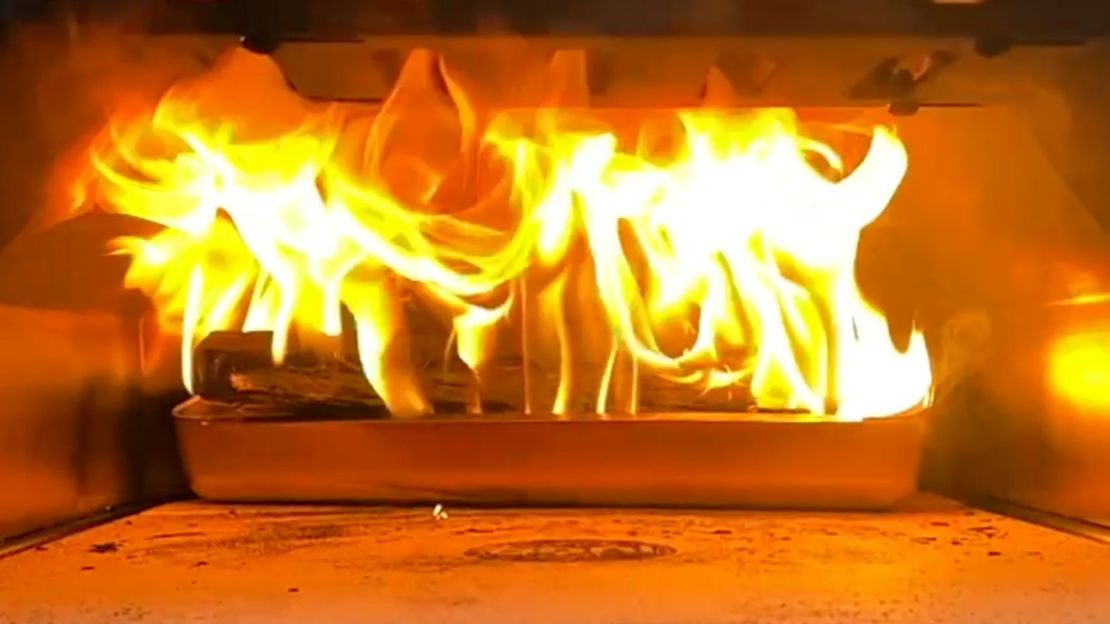
The pizza ovens that we looked at let you reach back to pizza’s Italian roots, achieving temperatures over 900 degrees Fahrenheit to execute pies to the strict requirements of the Associazione Verace Pizza Napoletana, on your patio, without having to build or permanently install a brick oven. All of the ovens we looked at are simple in design: a chamber designed to hold a flat, thick pizza “stone,” usually made of ceramic or a manufactured material that contains the mineral cordierite, designed to hold and distribute the high levels of heat needed to evenly bake a pizza.
We tested ovens that use several types of fuel, mainly wood (hardwood, fruitwoods, hardwood lump charcoal or wood pellets) and gas (liquid propane or natural gas). Some are “multi-fuel,” meaning they can be configured to burn either wood or gas, swapping out a special refillable hopper, propane or natural gas burner as desired. And we checked out a single electric model, Breville’s Pizzaiolo.
We had no problem reaching the desired 900-degree-plus temperature with any of the gas or wood-fueled ovens we tested. The choice of gas or wood really comes down to taste and how much time you want to spend fine-tuning your technique and managing your fuel supply.
Gas is more forgiving in that you don’t need to add fuel over the course of your baking, and you can adjust the temperature without learning to manage to vent or waiting for fuel to burn down — just turn a knob as you would on a stove or grill.
Wood takes more practice and is better suited for serious home bakers who are interested in mastering the craft of baking in the traditional Neapolitan style. There’s more work involved since temperature management is dependent on the timing of your fuel supply and careful attention to the venting of the oven chamber itself.
That temperature instability is what can give you a more pronounced crust char on a pie baked in a wood-burning oven — the temperature spikes and drops produce that effect, which many associate with an “artisanal” look and taste. You need to be very careful, of course, because the timing is critical not only for the crust but for the toppings — unless those are minimal, you don’t want to keep your oven at extremely high heat all the time.
That takes a lot of practice, and we had trouble consistently creating this effect in the ovens we looked at, given the difficulty in maintaining high heat on the stones. When we were more occupied with fuel management, we had to pay less attention to cooking the actual pizzas.
An electric oven is the simplest to operate, and the one we tested, though it couldn’t get hot enough to produce an artisanally charred crust, was much easier to use and turned out more consistently good pizzas. We think it’s a compromise most amateur home cooks would be willing to make, and that we much preferred during our testing.
As with anything culinary, cooking pizza is a science that requires years to master, but part of the enjoyment in cooking pizza is learning how to achieve the results you want. Working in a very hot oven requires constant attention, and you’ll need to rotate your pizzas frequently during their brief cooking time.
While all of the gas and wood-fueled ovens gave us similar results, some oven designs made the baker’s task easier. Narrower openings gave us less room to “launch” or place our pizzas on the stone and subsequently rotate and maneuver as they cooked, making it harder to execute a perfectly cooked pie, regardless of the fuel technology (the Breville electric oven was an outlier, requiring no interaction during cooking).
While most ovens are simple “open” designs — meaning that the slot or opening in the front has no cover when in use — some, such as the Ooni Karu 16 and Cuisinart 3-in-1, use doors or removable front covers. Ovens that are insulated and of thick construction (such as the Oonis or the Roccbox), are safer to touch or be close to when running at maximum oven temperature. Others are uninsulated, relying on a reflective heat design to evenly cook the pizzas (such as the Cru and the Bertollo).
Speaking of heat, all of these ovens are designed for outdoor use only — except for the Breville Pizzaiolo, which is an electric one that can be used indoors. The rest should never be used indoors where they would pose a serious fire hazard and threat to safety because their exhaust gasses need to be vented properly when in operation.
How we tested
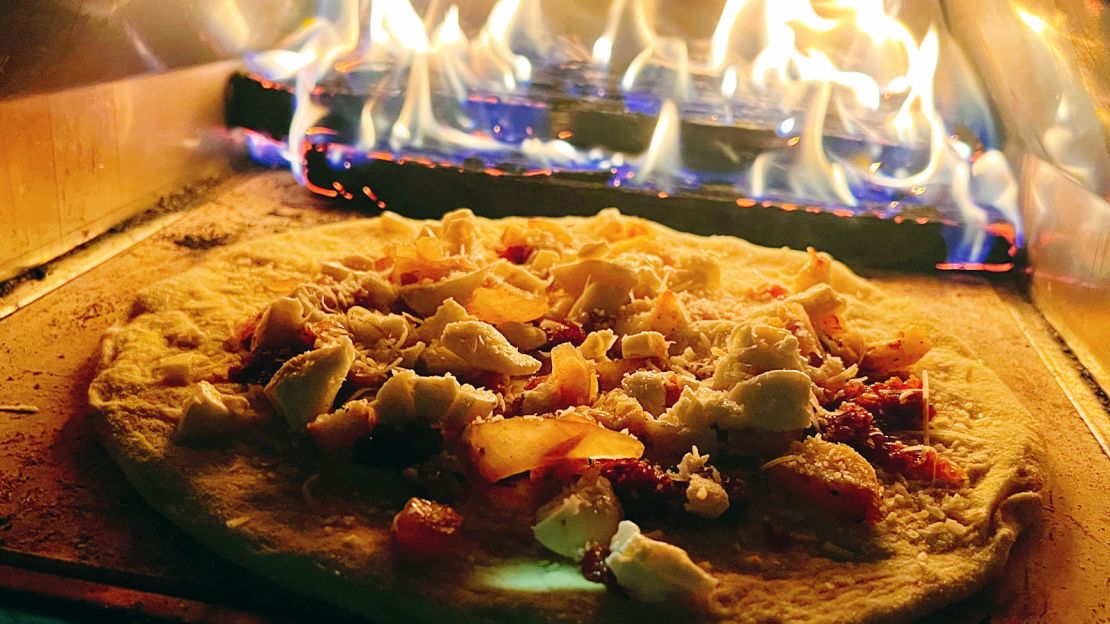
Except for the single electric model we looked at, which was used in our home kitchen, we propped all of these pizza ovens on top of either the grill grates of our outdoor gas grill or on a heavy, dedicated, movable steel table with locking caster wheels (the $249.99 large Ooni Modular Table).
For fuel, we used 20-pound liquid propane tanks purchased at our local Home Depot for the gas-capable units. For the wood-capable units, we used 6-inch white oak mini splits formulated for pizza ovens by Carolina Cookwood, combined with small amounts of Brazilian hardwood charcoal. The single example where we used only fruitwood pellets was with the Ooni Fyra.
The pizza dough we used is a 72-hour fermentation recipe formulated based on the Gozney “Perfect Pizza Dough” with some adaptations, using King Arthur Bread Flour.
Each oven was used for cooking at least a dozen pies at a range of oven temperatures. The benchmark test pizza was a standard New York-style thin-crust plain, with 240-gram dough balls, using low-moisture Kirkland brand shredded mozzarella from Costco and canned pizza sauces with minimal added sugar or other additives.
We used (and recommend) both the Cento Fully Prepared Pizza Sauce and the Muir Glen Organic Pizza Sauce for convenience and consistency of results, price point, retail supply chain availability and overall taste for use as a general sauce base. We also liked Rao’s as a super-premium option if you are not inclined to process and formulate your own sauce, but it really didn’t taste any better than the canned sauces recommended above in the finished pizza. The best option (and the best value), however, is to buy canned ground, crushed or whole tomatoes and process and customize your sauce recipe as desired.
For inspiration and further reading, we recommend participation in the various Facebook communities for home pizza baking (such as those for Gozney, Ooni and Breville) and Dan Richer’s The Joy of Pizza.
Performance
- Heating and evenness of baking: How well did this oven cook the pizzas? What were the maximum temperatures achieved?
- Heat-up time: From ignition to being ready to launch the pie, how long did it take?
Build and design
- Industrial design and build quality: What materials were used? How does the design affect performance and use, and potential issues with the durability of components?
- Innovation: Any technology employed in the build, such as electronic features or notable design elements that differentiate it from its competitors.
- Ease of use: How easy was it to use the product, what is the learning curve, if any?
Care
- Ease of cleanup
- Maintenance
- Warranty
- Customer service
Other pizza ovens we tested
Gozney Roccbox Pizza Oven
$599 at Gozney
The Gozney Roccbox (wood and gas) certainly has a lot going for it; its performance was on par with the Ooni Koda 16, our top gas oven. Getting those big bubbles and nice crust char was no problem on the Roccbox if that’s what you’re looking to achieve.
The Roccbox is also the best-insulated oven on our list, with a stainless steel inner and outer casing stuffed with ceramic fiber and jacketed in silicone rubber that effectively retains heat and, more importantly, makes it more comfortable to work in front of and safe to touch, even when the interior is scorching hot. It also has a built-in thermometer and the thickest pizza stone out of the ovens we tested. And it’s set up to be portable, with folding legs, a nylon sling and a handle that makes it a good choice for tailgating (and has made it a favorite of vendors at farmer’s markets).
While it’s a great oven, it didn’t make the top of our list for a couple of reasons. First, it has a small oven chamber and, though it’s meant for 12-inch pizzas, you really need to know what you’re doing to maneuver a bigger pie. In practice, we found it better suited to making 9-inch pizzas, which means more time spent cooking more pizzas for a hungry family or large group.
Though the Roccbox is sold as a multi-fuel oven, we thought that the wood hopper was undersized and relatively difficult to load; it required constant feeding with small chunks of wood to maintain temperature. We recommend the multi-fuel Ooni Karu or the Cru Oven if you’re interested in cooking with wood.
And lastly, the stone is permanently mounted, which can pose a problem if it cracks, as replacements aren’t available. We’ve heard reports on Facebook groups of users replacing the stone using third-party products with minor modifications, but this is best left to serious enthusiasts. So, despite the advantages of the thicker stone, beginners should stick with the Ooni.
Gozney Dome
$1,999 at Gozney
The Gozney Dome, a high-end oven from the makers of the Roccbox, is expensive, but with electronic ignition, the option to burn gas, wood or pellets, an integrated temperature probe and an advanced venting system, the Dome is versatile enough to make every style of pizza possible, along with artisan breads and pan-roasted dishes.
We baked dozens of pizzas on the Dome, and it conquered every style we threw at it, from New York to Neapolitan to Chicago — nothing was cooked unevenly, and we were able to manipulate and rotate the pies very easily in the roomy open hearth. Steaks and pork chops cooked in cast-iron pans came out beautifully too.
But, ultimately, it doesn’t bake a better gas or wood-fired pizza than an Ooni Karu despite coming in at three times the price. Also, if you want to take advantage of its flexibility, you’ll need to purchase accessories like a metal door and steam injector. Plus, it takes about 30 or 40 minutes to get it up to baking temperature due to the size of the interior cavity, so it is not for the impatient — this is an oven for someone who wants to make pizza part of their regular lifestyle, appreciates beautiful industrial design and outstanding build quality and is willing to pay the price for it.
Gozney Dome S1
$1,499 at Gozney
A more affordable, gas-only version of the Gozney Dome, the Gozney Dome S1 shares the flagship model’s design, build quality and range of accessories, with the same cavernous chamber that lets you really get in there and work with your pizza while it’s in process.
One gripe we had with the multi-fuel Dome is that it takes quite a while to come up to temperature given the size of the cavity. Relying on gas mitigates this a bit compared to wood, but that big oven chamber still demands patience. We were able to get up to reasonable cooking temperatures (750-plus degrees Fahrenheit) in less than half an hour, though we didn’t hit top temperatures until closer to the 40-minute mark.
After a couple of initial misfires (a couple of singed and underdone pizzas as we got used to riding the fuel supply to control temperatures), the S1 turned out fine, satisfying pizzas in minutes that were competitive with what we got from the other gas-fired ovens we tested. We really appreciated the room to work; turning your pizza as it bakes for even doneness is a breeze compared to smaller ovens and really makes using it a lot simpler.
Really, the question is how you’re thinking of using the oven. If you’re strictly into pizza and you’re not wedded to the notion of a wood-burning oven, the S1 does a fantastic job, and the big aperture and oven chamber, stable stand and easy-to-use venting simplifies the process a bit.
But for an extra $500, you get more flexibility with the multi-fuel Dome, in particular the ability to use it as a bread oven, with pretty impressive results (your baking skills come into play, of course — success is not entirely attributable to the oven). Gozney advises not running its ovens on gas with the door closed, so they don’t really work for bread baking. Given the artisanal attention the Gozney design encourages, we’d suspect that most potential purchasers would be better served with the original model.
Bertello Pizza Oven Everything Bundle
$449.99 at Bertello
There’s a lot to like about the Bertello 12-inch multi-fuel “Everything” bundle, especially as it is priced well below the comparable 12-inch Karu and the Roccbox for everything it does. It includes a gas burner, two types of wood fuel trays (one can be used in combination with gas), an infrared thermometer, a wood-handled steel perforated pizza peel and an outdoor cover.
The black-painted steel oven has a similar design to the Ooni Karu in that the baker can swap out the rear of the oven with a wood burner tray or a gas burner attachment (with an optional smaller wood burner in front for simultaneous fuel use).
The Bertello’s gas burner (which feels a bit as if it were designed after the fact) is a tad cumbersome as it is very long and tends to droop off the back of the oven. But that doesn’t affect its performance; we got the Bertello to well over 900 degrees Fahrenheit and that made for some rather nice pies.
However, the oven’s opening is very shallow, and we found it much more difficult to maneuver the pizzas inside it than in the Oonis or the Roccbox. That made for a more challenging cooking experience and required we make smaller pies than the oven is meant to accommodate. Bertello has since released a larger, 16-inch model with a more generous opening and taller interior oven ceiling (we were not able to evaluate the larger model in time for this review), so that may be a product worth considering.
Alfa Nano Gas-Fired Oven
$2,199 at BBQGuys
Like the Gozney Dome, the Alfa Nano is built for serious pizza enthusiasts — in particular those obsessed with Neapolitan-style pizza, which is baked very quickly (in 90 seconds) and thus requires extremely high levels of heat. The gas burner (the Nano is also sold in a wood-fired version) can get up to 750 degrees Fahrenheit in only 10 minutes, and upward of 900 degrees in just 15.
In fact, the Nano gets so hot — even at its lowest settings — that we had trouble not burning thin-crust styles to cinders. Unless you’re very specific in your needs we suggest an Ooni Karu, or the Gozney Dome if you are set on something similarly well built and designed.
If your heart is set on Neapolitan pizza, however, the Nano delivers, and it’s a beautiful appliance, with outstanding build quality, thick reinforced stainless steel and a double layer of ceramic fiber insulation, coated with weather-resistant paint. The baking surface, which measures more than 300 square inches, has removable baking stones, and the oven includes a removable steel door for bread baking.
Alfa Moderno Portable
$1,299 at Best Buy
The Alfa Moderno Portable offers similar design, stainless steel and ceramic fiber build quality and similar performance to its larger sibling, the gas-fired Alfa Nano, but in a smaller package. It’s not designed for permanent install like bigger Alfa ovens, but it isn’t really “portable” at 66 pounds — “schleppable” or “laulable” would be a more accurate description, especially by comparison with models like the 44-pound Gozney Roccbox that can be packed up and carried to a vehicle for transport by a single person.
Regardless, the 21-inch-by-20-inch Moderno Portable, with a 240-square-inch cooking surface, is considerably smaller than the 22-inch-by-36-inch, 370-square-inch surface Nano, and is better suited to smaller patios and less heavy-duty pizza oven carts. With its 16-inch opening, you can comfortably cook 12-inch or 14-inch pizzas, with plenty of room for maneuvering. As with the Nano, the bar-shaped gas jet (which can use propane or natural gas, depending on the adapter) is on the left of the cooking surface made of two large, thick removable ceramic tiles and is controlled by a large steel knob with a battery-powered push button igniter with pilot.
Assembly is easy; you simply need to attach the four removable feet with the integrated bolts, place the unit, install the battery in the igniter and then attach the gas adapter and chimney; after removing all the laser-etch plastic wrapping (which is tedious) the actual install took us about 10 minutes, most of which was making sure the adapter was secure with plumber’s tape and we had no gas leaks with the initial firing. Within 30 minutes, this oven and its cooking surface will get to 932 degrees Fahrenheit about half as fast as the Nano, but we didn’t need to run the oven that hot to make great American-style pies.
We had a much easier time controlling the heat of the unit with the smaller Moderno, however, as we could move the knob to a very low burn without extinguishing the jet and could get it to stabilize at around 550 to 600 degrees Fahrenheit for thinner-crust New York-style pies with our standard dough formulation. Small adjustments to the knob allowed us to increase heat up to 700-plus degrees Fahrenheit for pies with wetter ingredients (veggie, seafood) that needed the extra char. And great pies they were, with leopard spots and perfect crust char, cooked completely through. As with the Nano, we also did some pan roasts with it, and it performs extremely well as an outdoor salamander in this role.
At almost half the price of the Alfa Nano, this is an excellent pizza oven for someone who wants a more permanent, well-designed and durable gas appliance than an Ooni Karu or Koda and is willing to spend a fair amount of money but doesn’t have the patio or backyard space for a bigger product like the Alfa Nano or Gozney Dome.
Ooni Karu 12G
$429 at Ooni
A smaller version of our favorite multi-fuel oven, the Ooni Karu 12G gives you all the flexibility with less of a footprint, and while we were able to get good results, we found that the smaller oven chamber was a bit of a compromise, making it harder to keep loaded with fuel in wood-burning mode, limiting its use for things other than pizzas and making it a bit harder to maneuver our pizzas while cooking.
That said, once you get accustomed to working within the space you have, the Karu 12G works nicely, producing impressive pizzas despite the more limited working space. We had to take a little more care turning the pizzas as they cooked, and we were unable to fit our cast-iron cookware into the oven for other dishes as we could in the 16-inch version.
On the downside, the hopper is small, and keeping it full while maintaining the proper amount of fuel to leave space for air circulation takes some doing. It took a long time to get up to temperature in wood-burning mode — your mileage may vary with fuel type, but we spent the better part of an hour stoking the hopper to get the Karu 12G up to cooking temperatures. We think the gas option makes more sense in this size oven.
If you’re challenged for space or looking for a portable pizza oven for tailgating and other on-the-go uses (the Karu 12G is compatible with Ooni’s carry cover), the Karu 12G is considerably lighter and smaller than the Karu 16, and with care and practice you’ll get great pizzas out of it. That said, for most, we’d still recommend shelling out the extra money and reserving the storage space for the 16-inch version.
Ooni Fyra 12-Inch Pizza Oven
$349.95 at Williams Sonoma
The Ooni Fyra 12-Inch Pizza Oven is a bit of an oddball on this list because, while it is “wood burning,” it uses pellets rather than splits, kindling or charcoal as fuel. It has a similar construction and design to the 12-inch version of the Karu, with a vent-controlled smokestack. But it has a rear hopper for pellet loading into its removable combustion chamber.
While we liked the idea of a pellet-based pizza oven due to how evenly and consistently the fuel burns (and no doubt many folks who use Traegers and other pellet-based grills and BBQ smokers will appreciate this design), the hopper is so small that it requires constant feeding (every five minutes or less) to get the oven up to pizza cooking temperatures. If you’re someone who can pay a lot of attention to this process, then you can make some lovely pies. But we were more focused on fuel temperature and heat management on this oven than we were on cooking the pizzas themselves. We see this oven as one that appeals to campers and those who love to play with fuel loading.
Solo Stove Pi Pizza Oven
$624.99 $469.99 at Solo Stove
Solo Stove, known for its fire pits, has turned its industrial design expertise to pizza with the recently released Pi Oven. The cleanly designed stainless steel cylinder is portable and about as simple to use as a dual-fuel oven can be — just slide in the corderite pizza stones, bolt on either a gas burner or a wood hopper and ash tray, fire it up and you’re ready to bake in 20 minutes.
And we were able to bake great pizzas with the Pi. The oven’s “Demi-Dome” distributes heat effectively from the rear-mounted burner, and the Solo more than holds its own against similarly priced competitors such as the Ooni Karu. The downside is that the Pi gets very hot — so hot it’s uncomfortable to work with, and the smallish inner chamber means you’ll have to spend some time maneuvering. You’ll want a long-handled peel and tools, and you’ll want to keep your distance from it. More heavily insulated ovens like the Gozney Roccbox are a lot easier to work with for long periods.
Solo Stove Bonfire Pi Fire
$360 $260 at Solo Stove
The Solo Stove Bonfire Pi Fire isn’t a full-fledged pizza oven but an accessory that turns your Solo Stove outdoor fire pit into a pizza oven. The three-legged design lets it sit atop a Solo Stove wood-fired outdoor fire pit with its Flame Ring attached to bake pizzas while sitting back and enjoying your outdoor fire. We tested using a Solo Stove Bonfire 2.0 19-inch-diameter fire pit ($259); you can also get compatible units for Solo Stove’s smaller Ranger and larger Yukon fire pits.
The circular, stainless steel Pi Fire weighs 19.6 pounds, with a 14-inch-diameter cooking stone (the opening is large enough to allow maneuvering a smaller 10-inch or 12-inch pie using a peel). Assembly is simple; attach the three legs with the included ratchet tool with six screws and washers and insert the cooking stone, and you are ready to bake your pies.
There’s sufficient clearance to watch the flames from your burning wood splints lick the bottom of the unit and curve upward through an internal rear vent; the entire circular cooking stone is exposed to the air, including the entire front of the oven. The ventilation is self-regulating — or, rather, unregulated, as there is no vent control. You throw your wood in the fire pit, you let it burn and the oven gets hot; it’s about as basic as a pizza oven gets.
The problem is that it doesn’t get consistently hot enough to compete with our top picks. For firing up the outdoor fireplace, we used larger oak and hickory fire pit splits purchased from Home Depot, and for cooking the pizzas, we used 6-inch Carolina Cookwood splits. After a 30- or 40-minute initial burn with the larger logs, it required about 10 minutes of diligent refueling of about three to four logs at a time to get the stone above 500 degrees Fahrenheit. If you don’t pay attention with a laser thermometer, you’ll find that the stone will dip in temperature quickly if you don’t refuel, there isn’t much insulation in the product and its open-air design puts it at the mercy of the output of the fire pit itself.
The pizzas we got out of this particular oven using our standard dough formulation required a longer cook time (over 10 minutes per 10-inch pizza), and given the lack of a regulation mechanism, a lot more babysitting than the other products we used in order to get even cooking. Compared to other wood-fired pizza ovens we looked at like the Cru or the Ooni Karu, we didn’t get consistent or predictable performance — if you put too little wood into the pit, the fire dies down; if you put in too much, you get big flare-ups with a lot of soot, so there’s a learning curve with fuel management here, much more so than a regular wood-burning pizza oven with a smaller fuel hopper.
For Solo Stove owners who mostly like being outside by the fire pit and aren’t as serious about the art of pizza, the Solo Stove Bonfire Pi Fire is not a bad choice, but for someone who wants more consistent and controllable results they should look at a dedicated pizza oven instead.
Cuisinart CPO-600 Alfrescamore Outdoor Pizza Oven
$225 at Walmart; $250 at Cuisinart
At just over $200, the Cuisinart Alfrescamore is the most inexpensive pizza oven on our list. And while we would love to recommend it for its thriftiness, it is just too low-performance and chintzy in construction for us to consider using something like this when really, you can get better results out of your outdoor gas grill by simply placing some cheap quarry tiles or an aftermarket pizza stone accessory on top of your grill grates. The Cuisinart Alfrescamore is portable in that it is designed to use 1-pound LP canisters, but with such a small amount of fuel, you will run out of it so quickly trying to achieve pizza cooking temperatures, you’ll end up using a standard 20-pound LP canister adapter hose anyway (which doesn’t come with the product).
Cuisinart CGG-403 3-in-1 Pizza Oven, Griddle and Grill
$199 at Walmart; $250 at Cuisinart
At just under $250, this pizza oven is only slightly more expensive than the Cuisinart Alfrescamore oven and is a lot more versatile; it’s also, in our opinion, better designed and better performing. It also is configured to use 20-pound propane tanks out of the box. But this is less a pizza oven in our estimation than a small outdoor grill (and griddle) with a pizza baking stone and rack that sits above a small output gas burner. Setup was a bit of a pain in the neck as it has about 20 bolts that need to be attached to it to mount the base, consisting of four legs and a storage shelf. Still, once we got it running, we enjoyed cooking a few pies in it — just don’t expect results like the Ooni or Roccbox. And with cooking temperatures between 450-550 degrees Fahrenheit, it’s going to take longer to cook your smallish pies.
